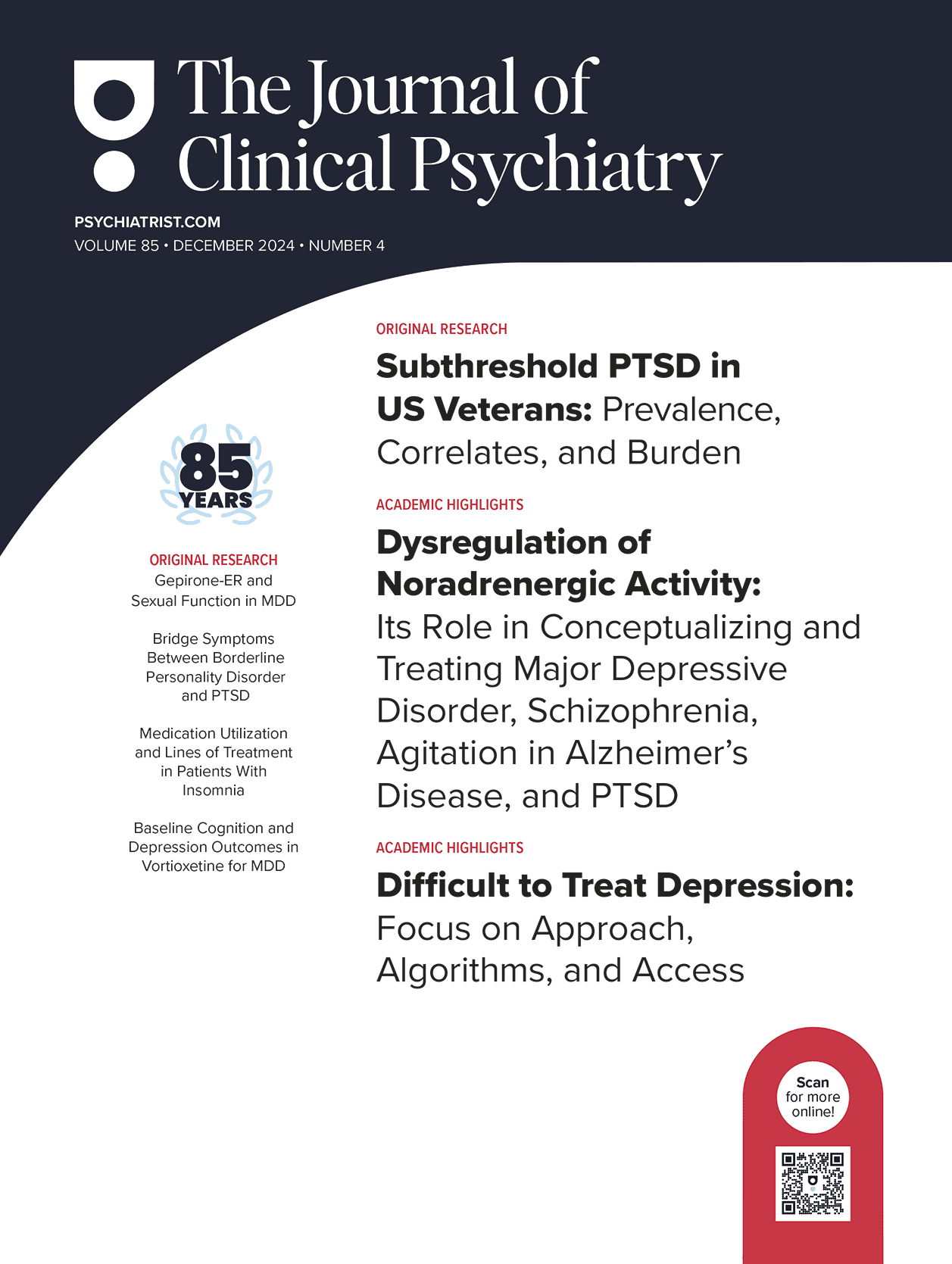Clinical Factors Associated With Treatment Resistance in Major Depressive Disorder: Results From a European Multicenter Study (original) (raw)
Original Research July 16, 2007
; Pierre Oswald, MDGroup for the Study of Resistant Depression (GSRD) ; Isabelle Massat, MD, PhDGroup for the Study of Resistant Depression (GSRD) ; Ursula Bailer, MDGroup for the Study of Resistant Depression (GSRD) ; Joseph Bollen, MDGroup for the Study of Resistant Depression (GSRD) ; Koen Demyttenaere, MD, PhDGroup for the Study of Resistant Depression (GSRD) ; Siegfried Kasper, MD, PhDGroup for the Study of Resistant Depression (GSRD) ; Yves Lecrubier, MDGroup for the Study of Resistant Depression (GSRD) ; Stuart Montgomery, MD, PhDGroup for the Study of Resistant Depression (GSRD) ; Alessandro Serretti, MDGroup for the Study of Resistant Depression (GSRD) ; Joseph Zohar, MD, PhDGroup for the Study of Resistant Depression (GSRD) ; Julien Mendlewicz, MD, PhDGroup for the Study of Resistant Depression (GSRD)
J Clin Psychiatry 2007;68(7):1062-1070
Article Abstract
Objectives: Very few studies have investigated clinical features associated with treatment-resistant depression (TRD) defined as failure of at least 2 consecutive antidepressant trials. The primary objective of this multicenter study was to identify specific clinical and demographic factors associated with TRD in a large sample of patients with major depressive episodes that failed to reach response or remission after at least 2 consecutive adequate antidepressant treatments.
Method: A total of 702 patients with DSM-IV major depressive disorder, recruited from January 2000 to February 2004, were included in the analysis. Among them, 346 patients were considered as nonresistant. The remaining 356 patients were considered as resistant, with a 17-item Hamilton Rating Scale for Depression score remaining greater than or equal to 17 after 2 consecutive adequate antidepressant trials. Cox regression models were used to examine the association between individual clinical variables and TRD.
Results: Among the clinical features investigated, 11 variables were found to be associated with TRD. We found anxiety comorbidity (p < .001, odds ratio [OR] = 2.6), comorbid panic disorder (p 1 (p = .003, OR = 1.6), recurrent episodes (p = .009, OR = 1.5), early age at onset (p = .009, OR = 2.0), and nonresponse to the first antidepressant received lifetime (p = .019, OR = 1.6) to be the factors associated with TRD.
Conclusions: Our findings provide a set of 11 relevant clinical variables associated with treatment resistance in major depressive disorder that can be explored at the clinical level. The statistical model used in this analysis allowed for a hierarchy of these variables (based on the OR) showing that comorbid anxiety disorder is the most powerful clinical factor associated with TRD.
Continue Reading...
Did you know members enjoy unlimited free PDF downloads as part of their subscription? Subscribe today for instant access to this article and our entire library in your preferred format. Alternatively, you can purchase the PDF of this article individually.
Save
Cite
INFORMATION FROM INDUSTRY

Vol 85 • 2024 • Number 4